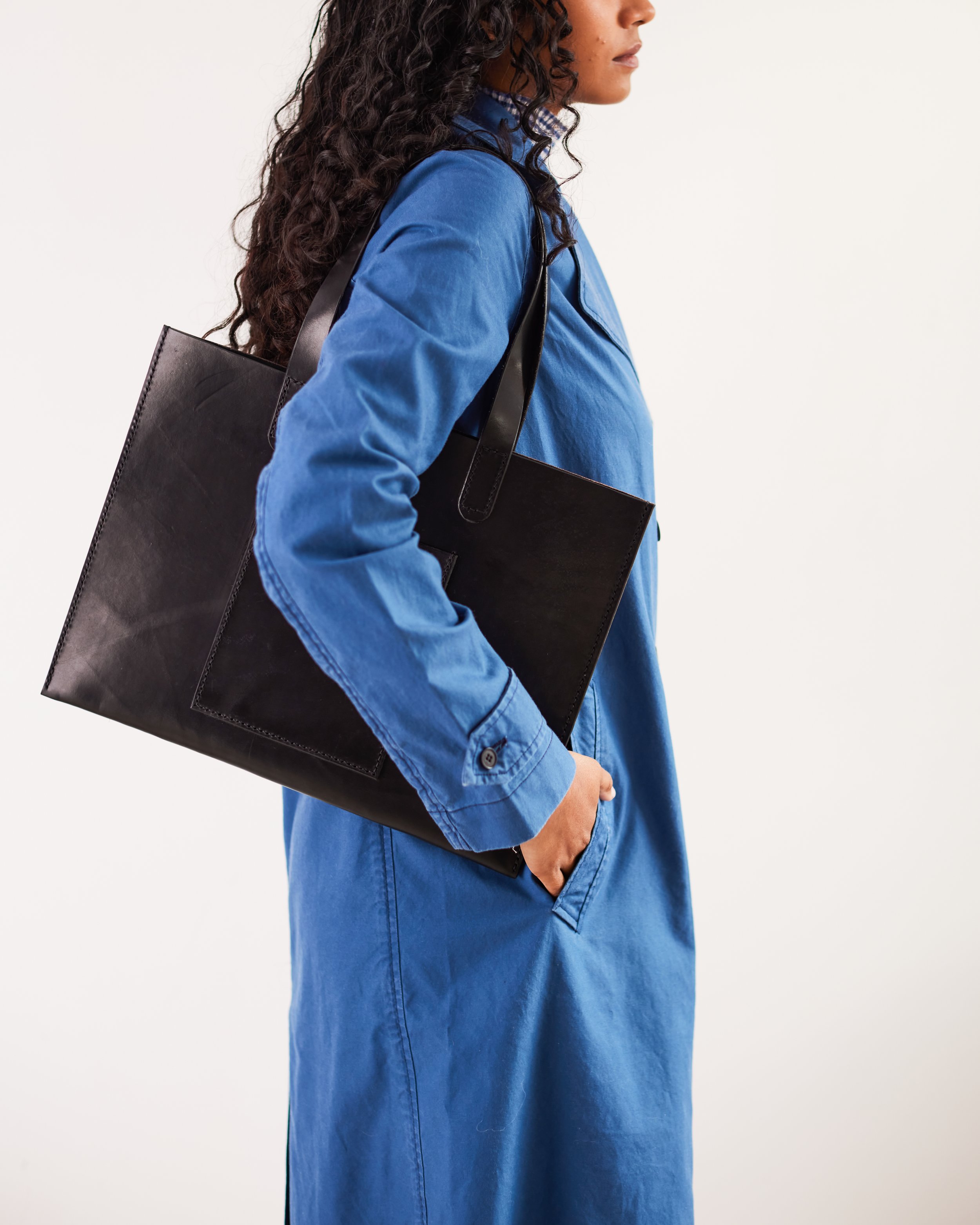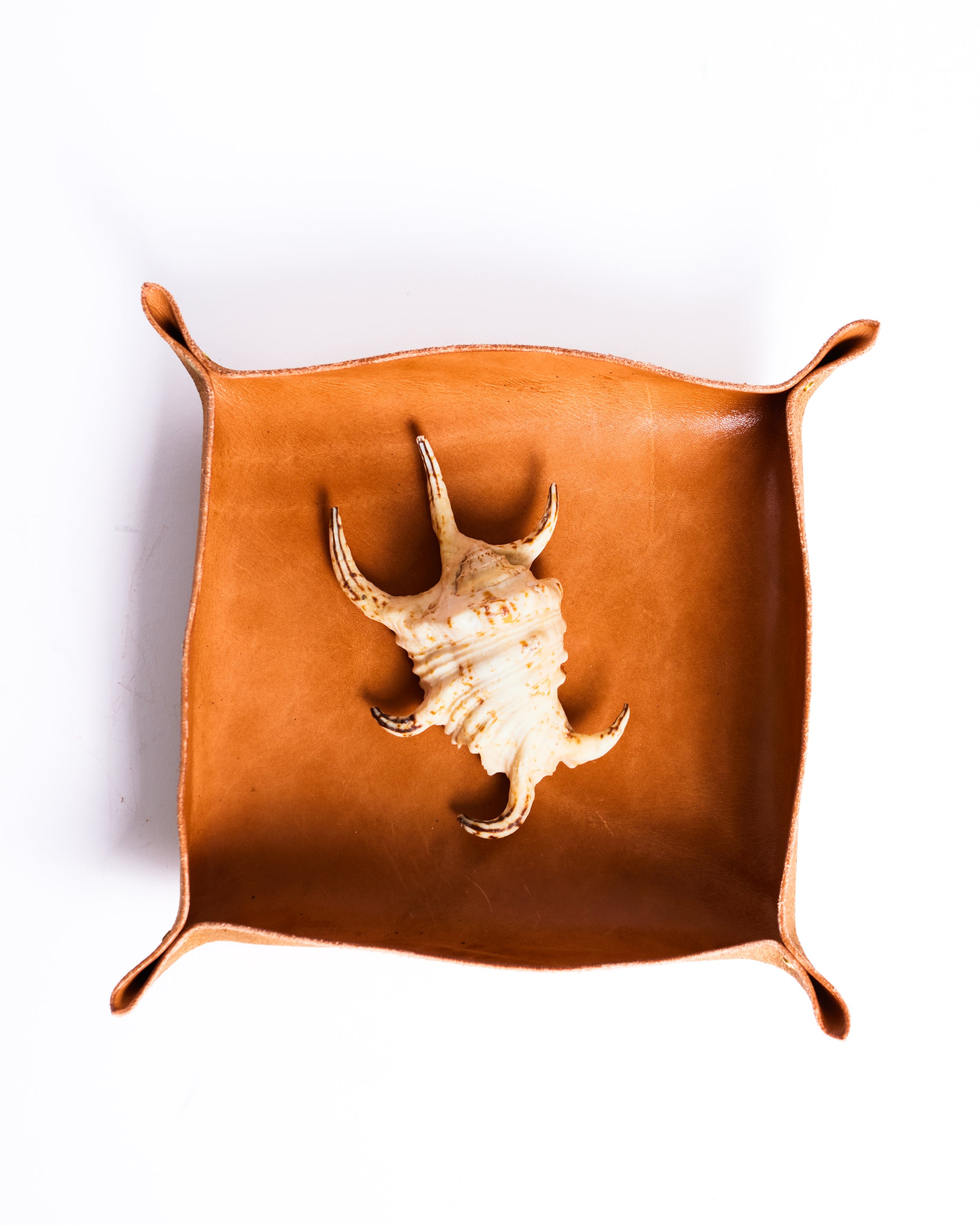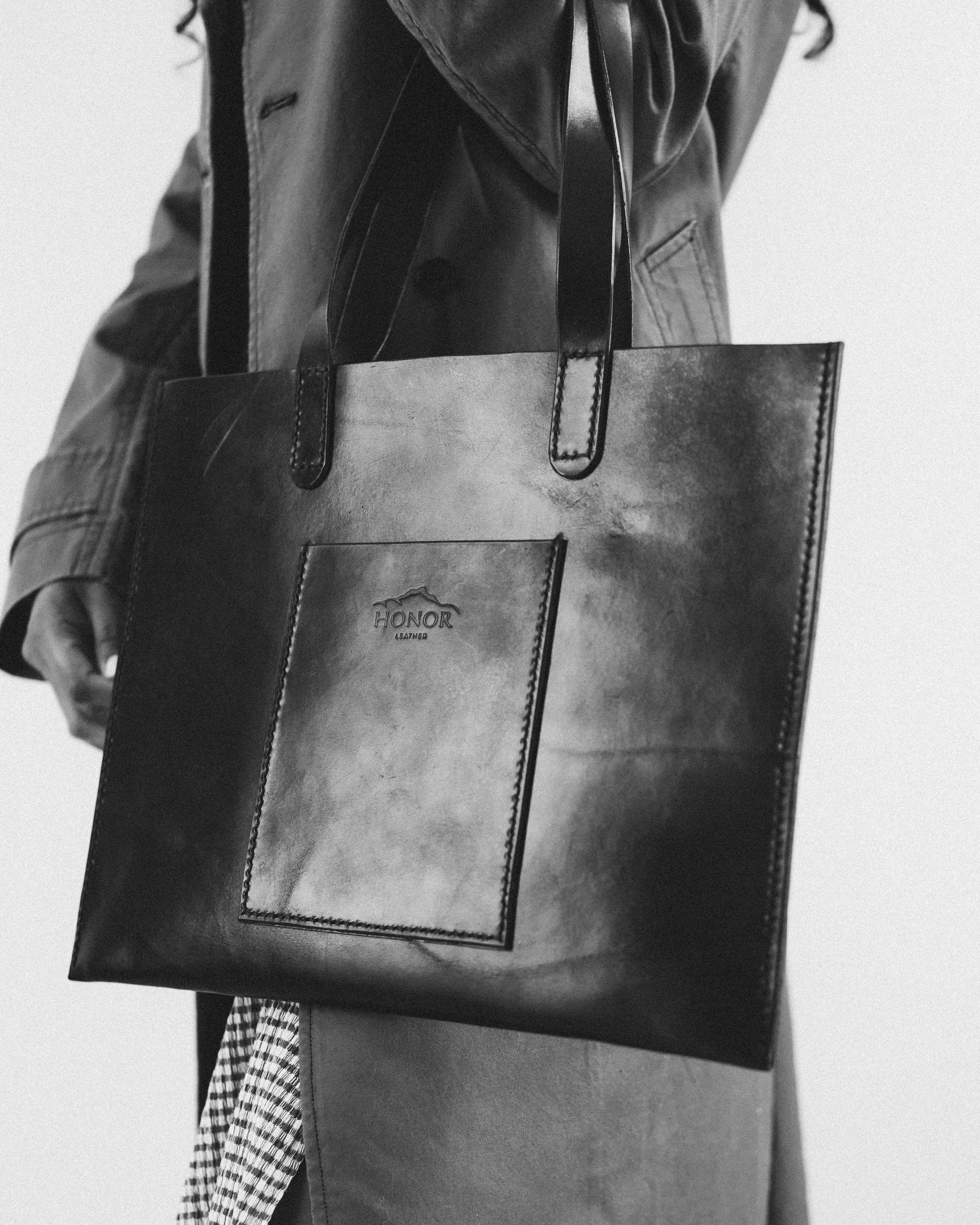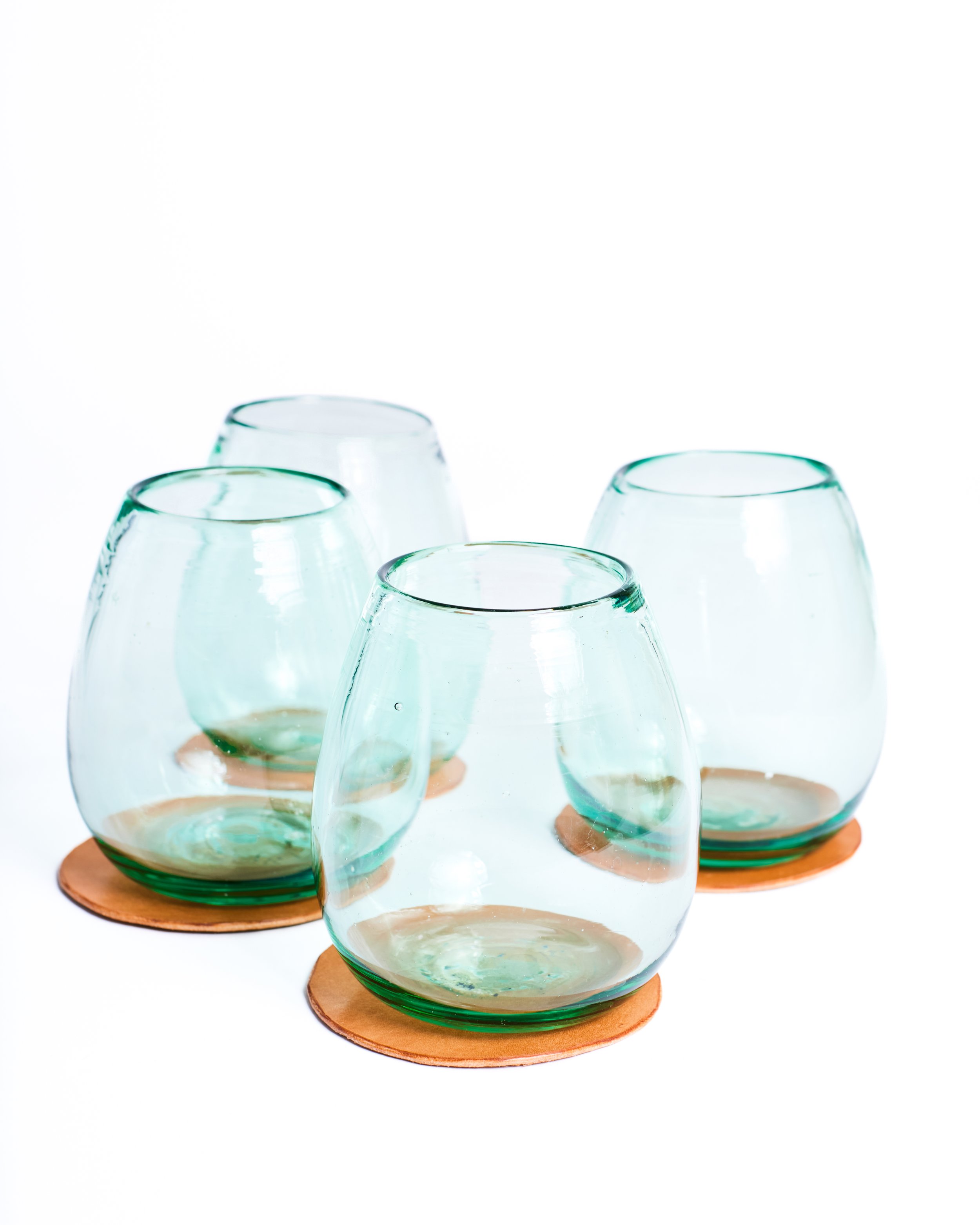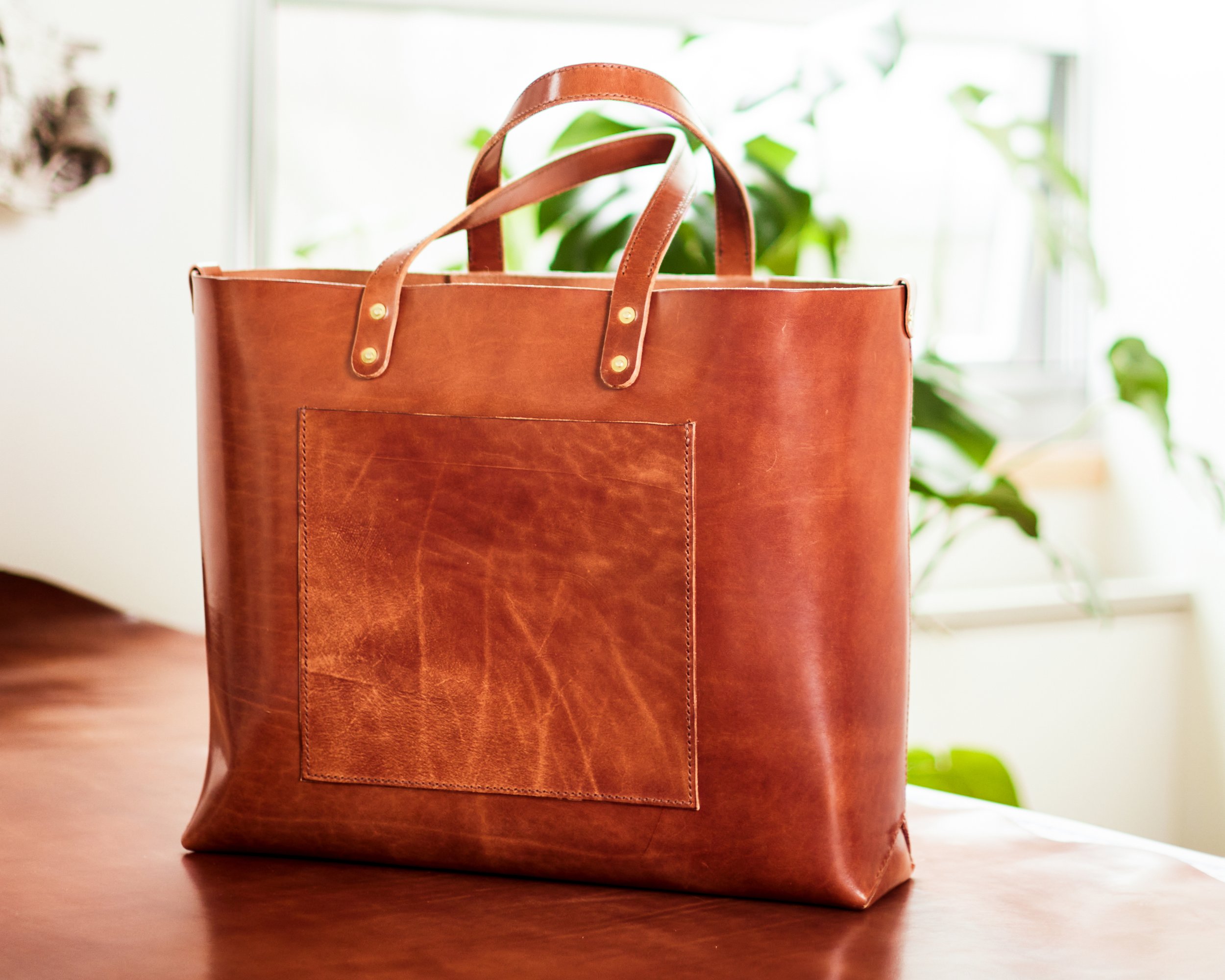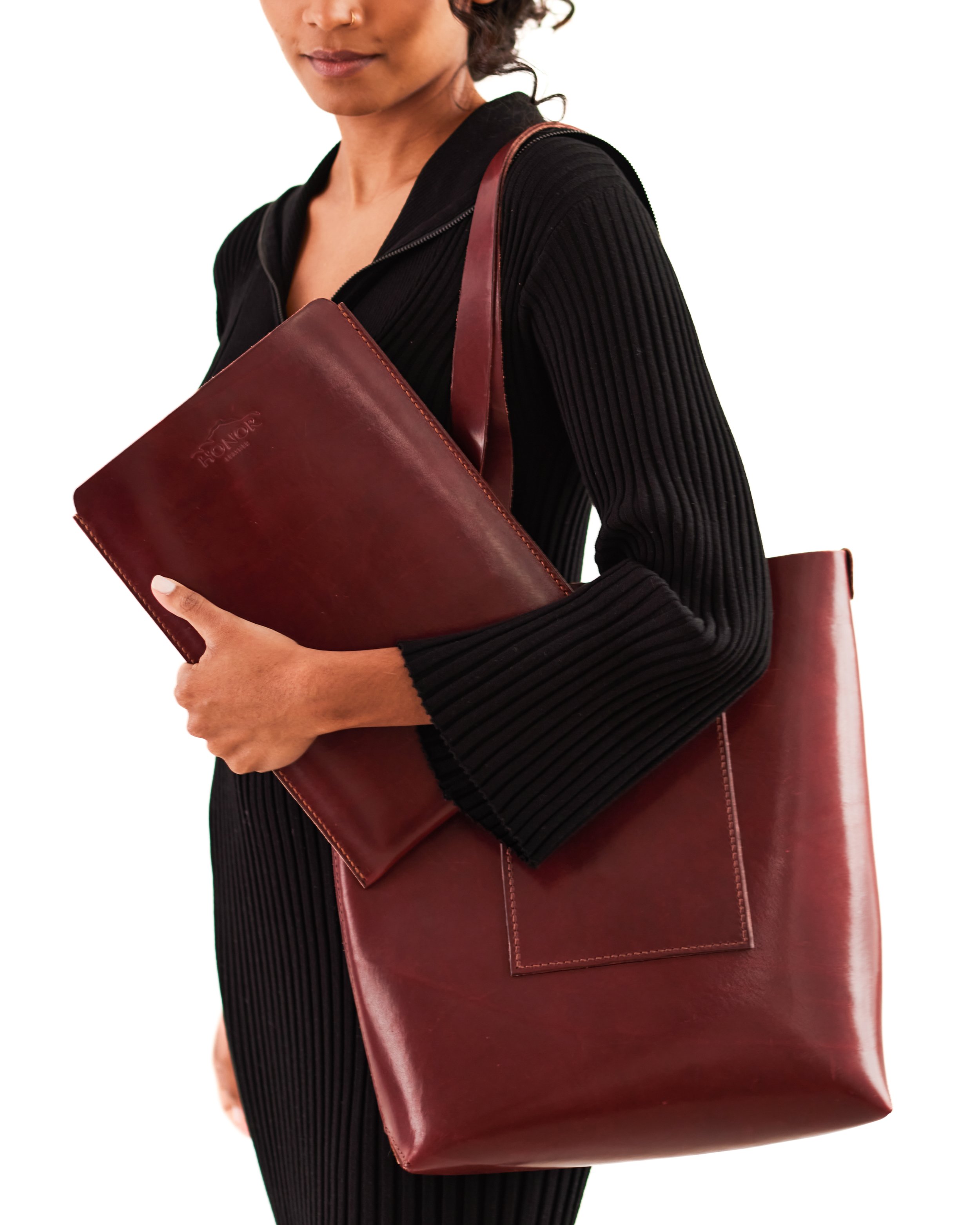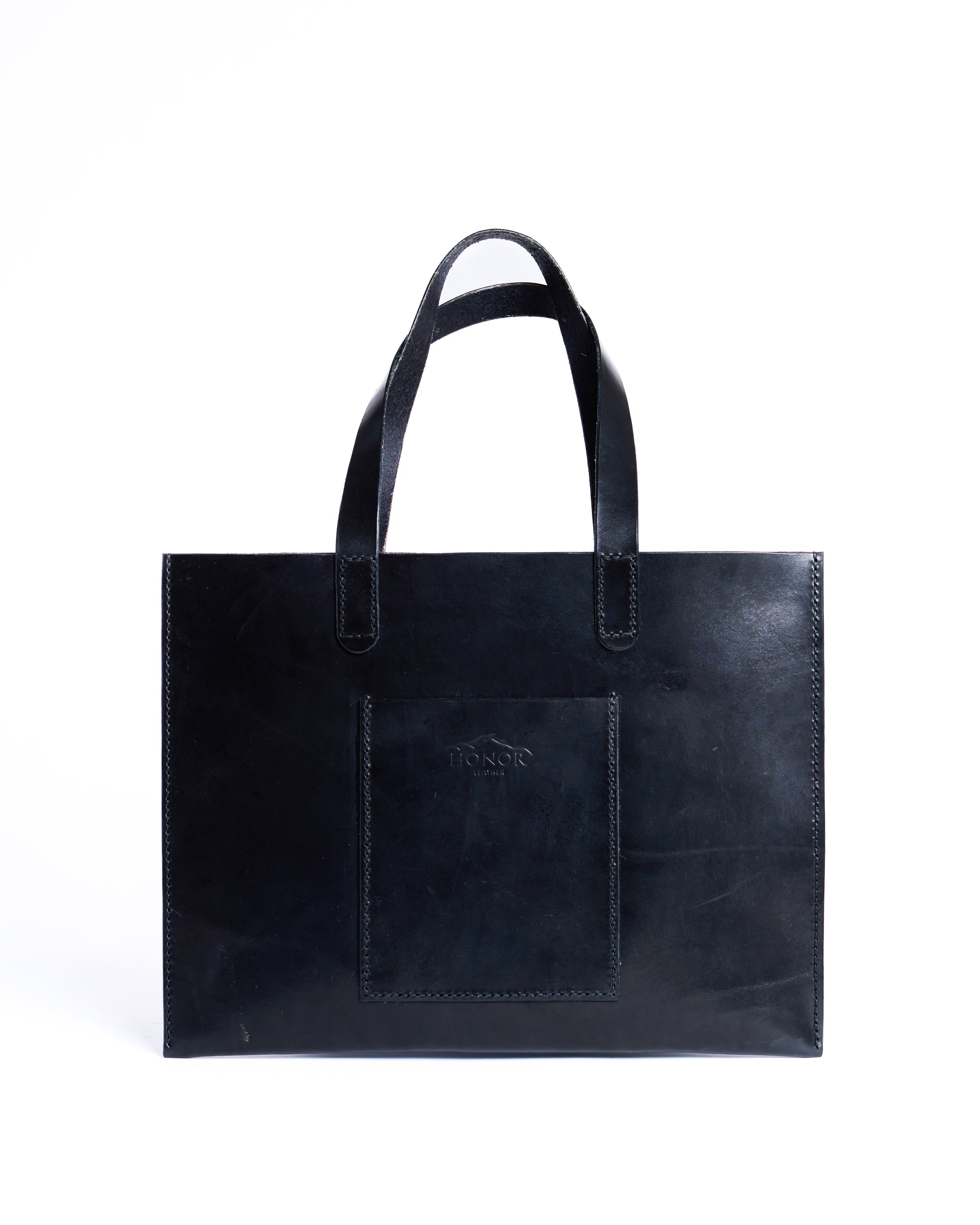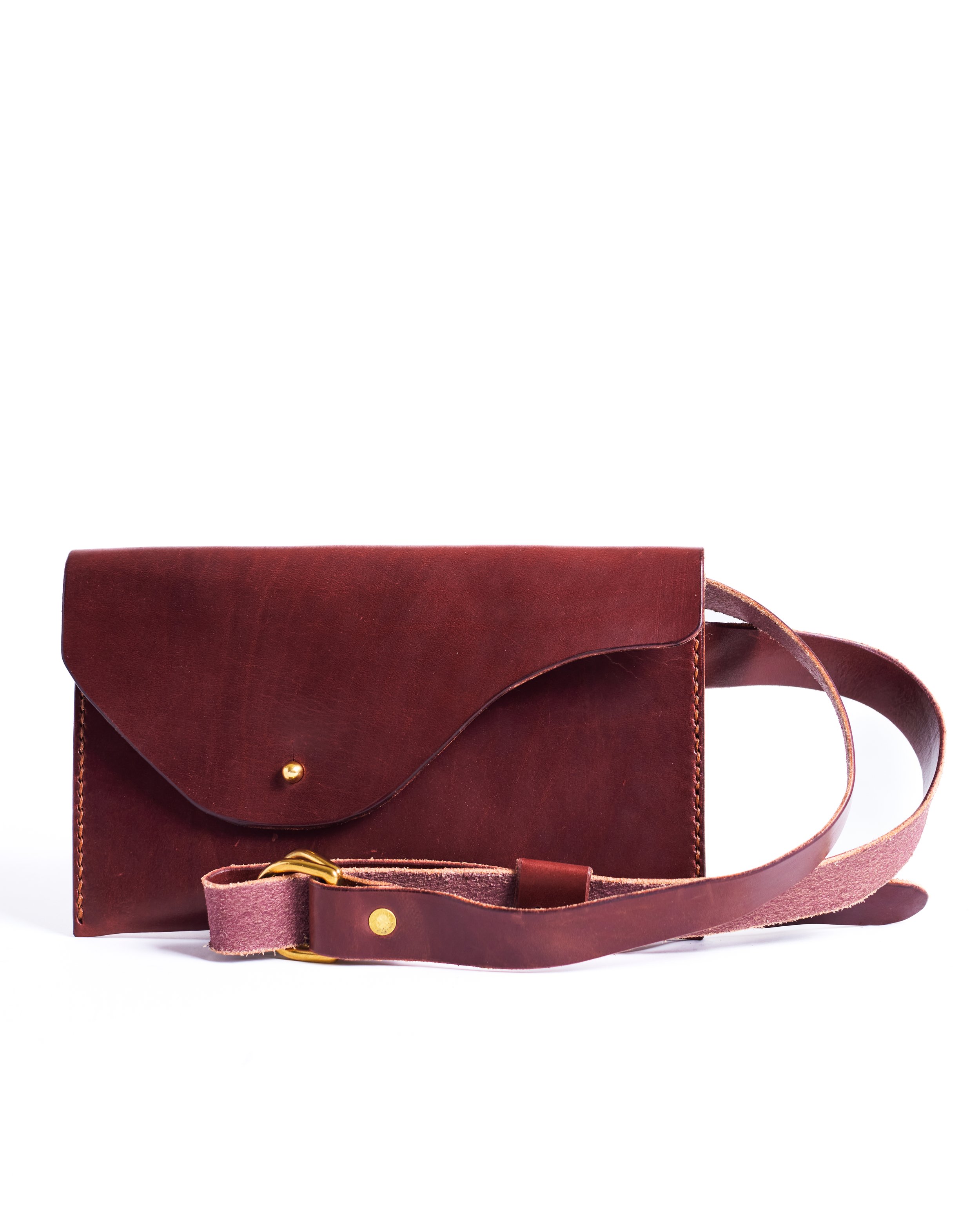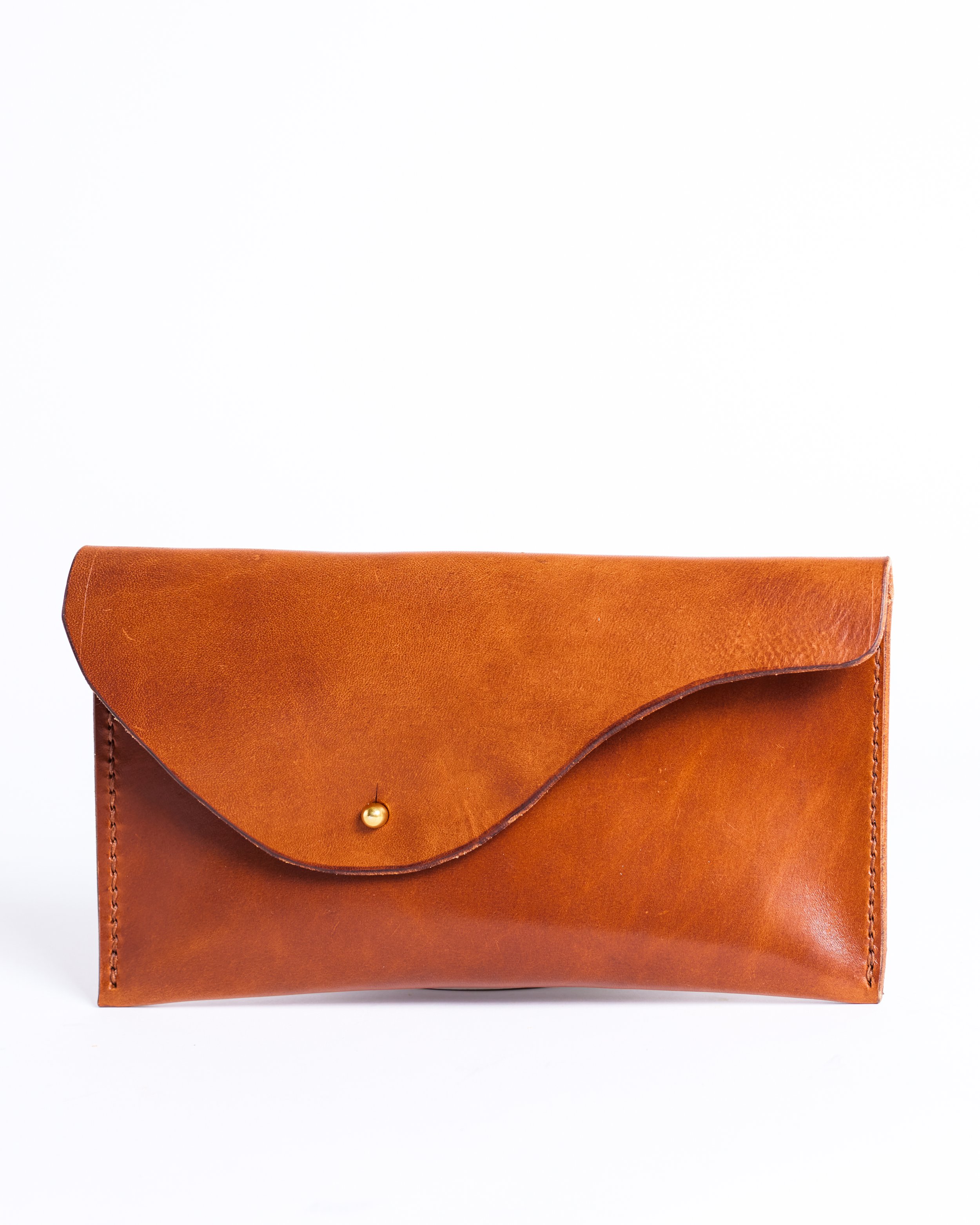How we do what we do
Welcome to our process
When you purchase one of our carrygoods, you are entering into a relationship that will age and develop throughout your journey
We start by laying out a hide and determining the best pattern placement that will highlight the beauty and character of the leather.
It all begins with a single piece of leather
We use Wickett & Craig’s vegetable tanned Traditional Harness leather, saddle stitching and solid brass hardware to create goods that are simple in style and designed to serve faithfully for a lifetime or longer while developing their own unique character (patina)with age. The leather we use is Full Grain meaning it retains all the character from its previous life on the range: insect bites, stretch marks, and scars are all still visible making no two hides (and therefore bags) alike. We believe in honoring the previous life of each hide and are grateful for the opportunity to highlight the beauty in imperfection while creating something unique that will serve for decades to come.
Every step of our creation process from patterning and sourcing to stitching and hammering hardware has been thoughtfully considered and measured against our values. When you purchase an HL carrygood you are entering into a relationship with that object that will age and develop through your journey together. Additionally, you are establishing a bond with us, the owners who handcrafted the bag, the tanners at Wickett & Craig who produced the leather and the artisans at The Buckleguy who forged the hardware.
The result of our work is an authentic and connected experience that is meaningful for all.
Honor the process
After the pattern pieces are cut, we burnish all of the edges - this time consuming step gives them a polished, shiny finish and seals the edge. The next step is to emboss our Honor Leather stamp and the bag’s unique serial number using an arbor press. Once the edges are burnished and the identification has been embossed, we scribe the stitching lines and prick the holes for seams using pricking irons and a mallet. The seams are then hand sewn with two needles and thread using saddle stitch. Solid brass hardware and rivets are hammered into place. The piece is buffed and inspected and then photographed for our product log. Finally, we pack the piece with care and prepare it for shipment or in studio pickup.
-
Saddle stitching is one of the oldest and most durable and reliable ways of joining leather. The technique uses a single thread with two needles - one on each end. The needles are both passed through each hole and the thread is knotted together (making every single stitch an individual knot). This method is far more durable than the result of a machine lockstitch where the threads are effectively looped around one another which allows the seam to unravel if the thread is compromised. We use Ritza braided Tiger thread from Germany which is world renowned for its strength.
-
Brass is a visually beautiful and wonderfully durable material for hardware. It does not rust. It has a nice physical weightiness and a forgiving quality that allows the material to bend when exposed to extreme force before breaking. We use solid hardware and rivets as opposed to hollow because they are stronger and can withstand heavy use. Hollow rivets are snapped together and then finished by tapping with a hammer, a solid rivet set is composed of a rivet and a burr. The rivet end is hammered until it effectively flattens over the burr to lock the set in place. We source our hardware from The Buckleuy, a four generation family business established in 1945 and located in Newburyport, MA.
-
Wickett & Craig was founded in 1867 and is located in Curwensville, PA. The tannery is one of the oldest vegetable tanneries in the US and produces exquisite leathers.
Vegetable tanned leather is a highly durable material prized for its character,finish and “pull up”. “Pull up” refers to the variation in tone experienced when the leather is pinched or folded. Wickett & Craig’s Traditional Harness leather has undergone a process called “jack glazing” which brings the oils to the surface creating a polished, glossy finish. Vegetable tanned leathers retain their natural oils far longer than chromium tanned leathers allowing them the ability to age gracefully, developing a unique patina. This quality coupled with leather’s durability makes vegetable tanned leathers perfect for creating heirloom pieces.
Vegetable tanned leather is considered to be an environmentally conscious material. All leather creates a beautiful and honorable use for the hides that are a byproduct of the beef industry. The inherent durability of the material means that a piece made from veg tanned leather will last longer therefore reducing the need for replacement. Beyond that, the tanning process itself is far less pollutive than that of chromium tanning (which is used for approximately 80% of the world’s leather goods). Chromium tanning uses toxic chemicals but is cheaper and quicker. Vegetable tanning uses tree bark to facilitate the transformation of hide to leather. The process is more labor intensive and lengthy. Wickett & Craig leathers take about six weeks to produce from start to finish and are highly coveted for their remarkable character. Committed to environmental sustainability, Wickett & Craig has been audited by the Leather Working Group which awarded the tannery a traceability rating B.
The results are multigenerational pieces

From the ground up
Shop Now
Newsletter
Be the first to know about our new collection launches, special offers & other updates.




